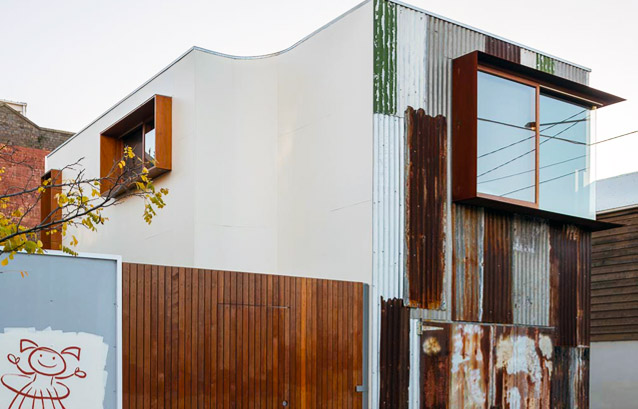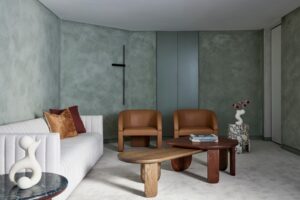Caught in the wave of gentrification that has washed over many originally industrial, less-affluent areas in Sydney, Redfern finds itself in that patchwork, adolescent stage where design and disrepair rub shoulders. And, whilst repair and modernisation are often positive changes, they can also overly sanitise pleasantly worn aesthetics, robbing buildings of their charm.
Image: Richard Carr
Graduate of Architecture Raffaello Rosselli’s work on a neglected tin shed is an excellent example of how architectural intervention can revive a building without compromising its character.
Image: Mark Syke
Dating from before 1943, the shed is a relic of Redfern’s industrial past – narrow, windowless, and clad in a quilt of corrugated iron sheet, it had fallen into disrepair and was structurally unsound.
Original structure – Image: Raffaello Rosselli
Rosselli’s design was prompted by the client’s desire to repurpose the shed into a studio and home office. To achieve this the original structure was disassembled and set aside while a new timber frame was erected, and then reapplied to the finished build. Corten steel window boxes were cut through the form and extended out over the lane and street, opening up the once windowless space, the west face was clad in expressed joint fibre cement panels, and plywood floors and joinery wee added to warm the interiors.
The project is all the more admirable for being Rosselli’s first executed design, completed while finishing his Masters degree. The attention paid to the historic qualities of the structure demonstrates the architect’s commitment to adaptive reuse and dynamic design that evolves and ages gracefully.
The feedback about the project from the local community demonstrates the importance of this philosophy; as Rosselli states, “It was nice to see the reactions from the neighbourhood – people would stop by, some in disbelief, but many to let us know how glad they were to see the shed being preserved.”
Image: Mark Syke
Raffaelo Rosselli Graduate of Architecture
rdotr.com
Photography:
Mark Syke
marksykephotography.com
Richard Carr























